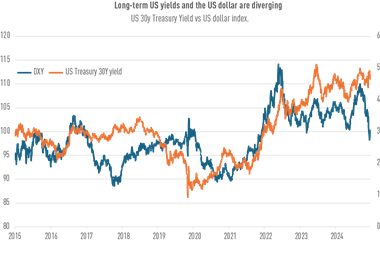Do not be “slaves to your benchmark,” warned the chief investment officer of South Korea’s US$35bn sovereign wealth fund, the Korea Investment Corporation.
Scott Kalb told PPI delegates that sticking closely to a benchmark and rebalancing allocations of assets accordingly was not a foolproof way to prevent or even minimise losses - as many investors found during the market turmoil of the global financial crisis.
“By definition if we’re using a benchmark to control our risk of losing money then it is a very assymmetric instrument,” Kalb said, “because if you are benchmark oriented then your risk-free position is to have zero tracking error to your benchmark. But then of course, you’re not risk free, you just have 100% benchmark risk.”
The issue of benchmarks provoked much discussion and frank comments. A speaker from the floor of the meeting pointed out that being neutral to some fixed-income benchmarks during the past few years meant funds could have had large exposure to subprime instruments that later plummeted in value.
Oliver Bolitho, managing director at Goldman Sachs Asset Management in Asia, said recent research revealed a “startling” increase in billion-dollar companies across the region.
“Current benchmarks are not capturing that,” he said. “Benchmarks around the world are forcing us to invest in the sectors that were successful yesterday.”
Bolitho said current benchmarks typically meant investors in Asia were underweight sectors in the region such as consumer industries that were growing quickly and showed enormous investment potential.
That was echoed by Theresa Whitmarsh, executive director of the US$52bn Washington State Investment Board. Benchmark risk was likely to be the fund’s biggest concern.
“It’s probably the biggest fundamental concept or new idea that’s come out of the crisis for us,” she said. “If you look at world gross domestic product, and look at benchmarks, there’s a big gap. So we’re trying to figure out what to think about this and what to do with it going forward.”
The issue of rebalancing allocations of money to different types of investment more frequently than traditional wisdom suggested was also controversial. (See also Oscar Volder’s column on the subject in the November/December 2010 edition of IPA)
“The whole approach to asset allocation used to be an annual exercise,” said Jacob Tsang, director of group treasury at the Hong Kong Jockey Club. “That’s changed in a sense because we are more critical about the input used to arrive at an asset allocation.
“We do it more frequently, and more importantly we used the exercise to ask the board to allow us to venture into strategies that in the past people would label as ‘market timing’,” Tsang said. “We see it as a shorter investment cycle.”
For example, when the club’s alternative investments blew up in 2008, the endowment increased its exposure to take advantage
of the market turmoil.”Under more normal circumstances, the board would say ‘sell’,” Tsang said. •














No comments yet